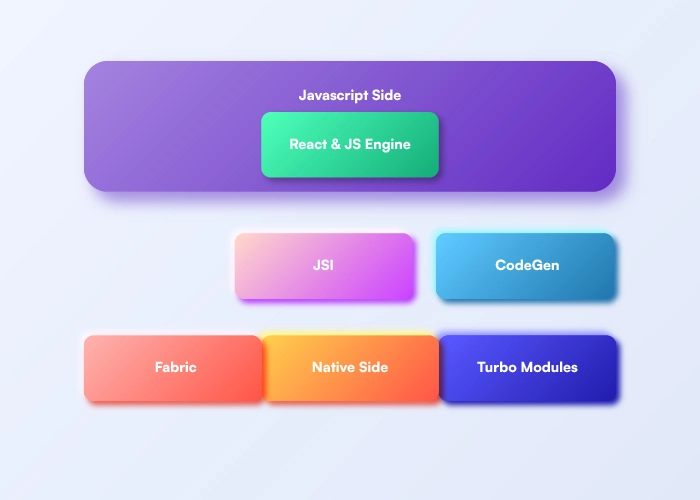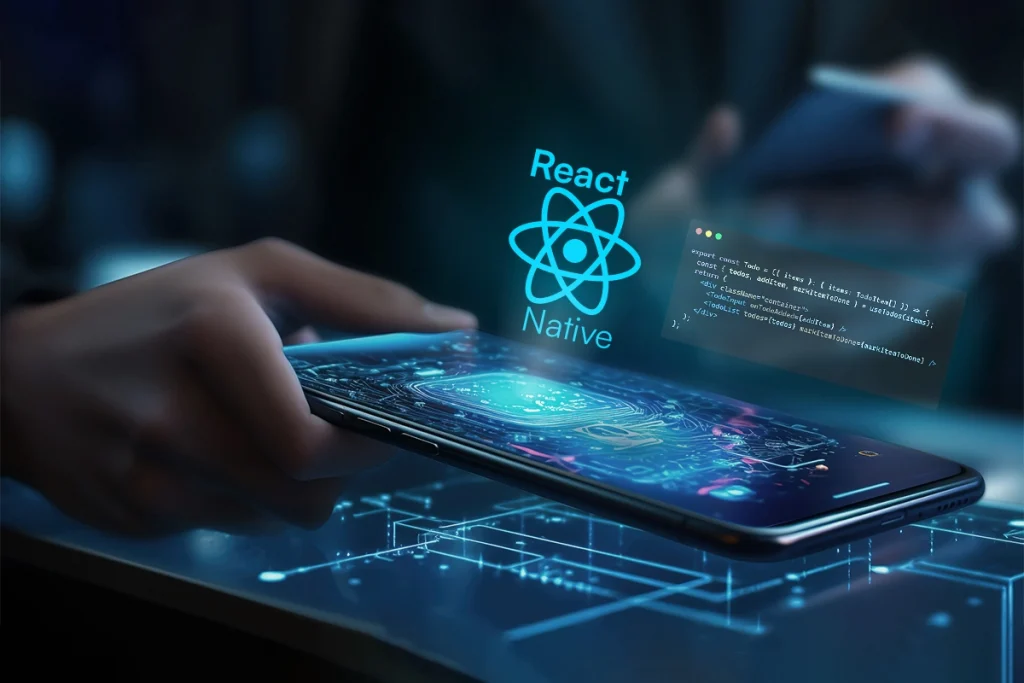As we stand in 2024, the future of React Native holds the promise of innovation, efficiency, and enhanced user experiences. However, React Native is best known for its ability to create complex apps that contribute significantly to a legitimate user experience by utilizing its advanced features. We can give a guarantee that the future of app development will be based on how react native shapes the app development field. Facebook created react native in 2015, initially for iOS and subsequently for Android. This enabled the concurrent development of a mobile app on two platforms while preserving the native appearance, feel, and functionality of the app.
Initially, react native utilised the iOS code repository and synchronised with Android, but Facebook’s shift to a unified code repository helped react native become more efficient. According to the Stack Overflow Developers Survey 2021, React Native is ranked fifth with 14.51 percent of the vote. React Native is reportedly a powerful instrument for platform-independent mobile development despite its weaknesses. Based on the much sought-after change, combining React Native with emerging technologies like AI and machine learning offers more dynamic and intelligent functionality in apps. In recent years we can notice that, Facebook, Instagram, Airbnb, and salesforce have incorporated react native into their frameworks to obtain a competitive advantage.
Why is it Popular?
It is believed that the use of React Native by these well-known business brands like Facebook, Tesla, Instagram, Airbnb, Ubereats, Skype, etc contributed to its popularity. This JavaScript-based framework is highly portable and reliable that allows developers to build excellent iOS and Android apps using single codebase. Another major factor is its faster development in the Mobile app framework. The loading time is said to be extremely fast, and there are no build periods. React Native also allows developers to reuse the codes on the web and mobile devices. This kind of sustainability hugely contributes to react native development.
Major Benefits of React Native
Saves Time and Money
Approximately 95% of React Native’s code is based on cross-platform development. This means that codes are compatible with both Android and iOS. React native offers the benefit of using native components wrapped in JavaScript code, rather than platform-specific languages like Swift or Java. This type of benefit saves developers a substantial amount of money and effort. Businesses can now have two apps at once for a fraction of the cost of developing a single version. A key feature of react native is the ability to reuse code across platforms. This reusability service is rumored to reduce costs by approximately 40 percent each time.
Amazing Performance
React native in 2024 provides enhanced efficacy through the use of native controls and modules. The open-source framework utilises native APIs, user experience and the smooth UI interactions that contributes substantially to its superior performance. They are quick because of the mobile-optimized programming language. React native applications utilize the graphics processing unit (GPU), making them significantly faster than cross-platform hybrid technologies. Typically, a React native application launches relatively quickly and smoothly compared to other cross-platform frameworks.
Flexibility
React native’s interface makes it simple for multiple developers to pick up where another left off and continue the development process. This increases team flexibility and makes updating and upgrading the mobile application simpler. It also provides testers with greater flexibility to construct testing scenarios. These advantages collectively contribute to the efficient development of mobile apps with React Native.
Updates are Published Faster
The process of updating your software may take longer. It requires developers to repeat the build procedure for each app individually. With React Native emerging technology, this procedure has been streamlined. Not only can both applications (iOS, Android) be updated simultaneously, but the entire process is also much simpler and faster. The next time the app is opened, the update is ready for the user. No longer is it necessary to manually update the app through the app stores and have it approved by iOS or Android, saving time and streamlining the process significantly.
React Native Community
The React Native Community has been growing rapidly throughout the years. Although, react native has an active developer community that provides enough support, resources and libraries to deal with any development obstacles. The community has seen more than 2,000 developers who contributed 16,000 times for 300 releases in about 72 batches. These kinds of statistics show that Facebook is working towards the future of React Native. In the early days of 2018 Facebook created a strong and reliable React Native repository. This was done to maximize benefits and synchronize efforts for the future of react native.
Fabric is the Next Step for React Native

React native is working on a large-scale project called Fabric. This latest rendering system is used to recreate the rendering layer of React Native. The aim of this project is to make react native more responsive and fabrics architecture will further help react native to blend with the hybrid JavaScript-based infrastructure.
The developers are outlining the significant changes Fabric can make for the react native development. The developers of Fabric are noticing three significant changes that fuel the react native growth in the future.
New Threading Model
Instead of allowing each UI/UX react native update to work on three separate threads, Fabric will enable developers to call simultaneously into JavaScript on any given thread. This also helps in reducing the stress on the main thread without compromising on the response.
Async Rendering Capabilities
Under this change, react native performance will have async rendering abilities. This makes it easier to handle asynchronous data, and also allows multiple rendering needs.
Simplified Bridge
Developers are planning to build a fresh sophisticated path, which will improve the direct calling between JavaScript and native. It will further simplify the building of various debugging materials.
Conclusion
In 2024, the number of smartphone users is close to 7.07 billion. This will give various opportunities for the mobile app market to grow tremendously. A large number of developers and the reusability of the code play an important role in the future of react native.
We at Cuneiform are committed to harnessing the expansive opportunities presented by the growing smartphone user base in 2024. Leveraging the power of React Native, our team of skilled developers ensures not only seamless code reusability but also pioneers innovative solutions that elevate your mobile app experience. Partner with us for cutting-edge React Native solutions that go beyond expectations, propelling your digital presence into the future.




